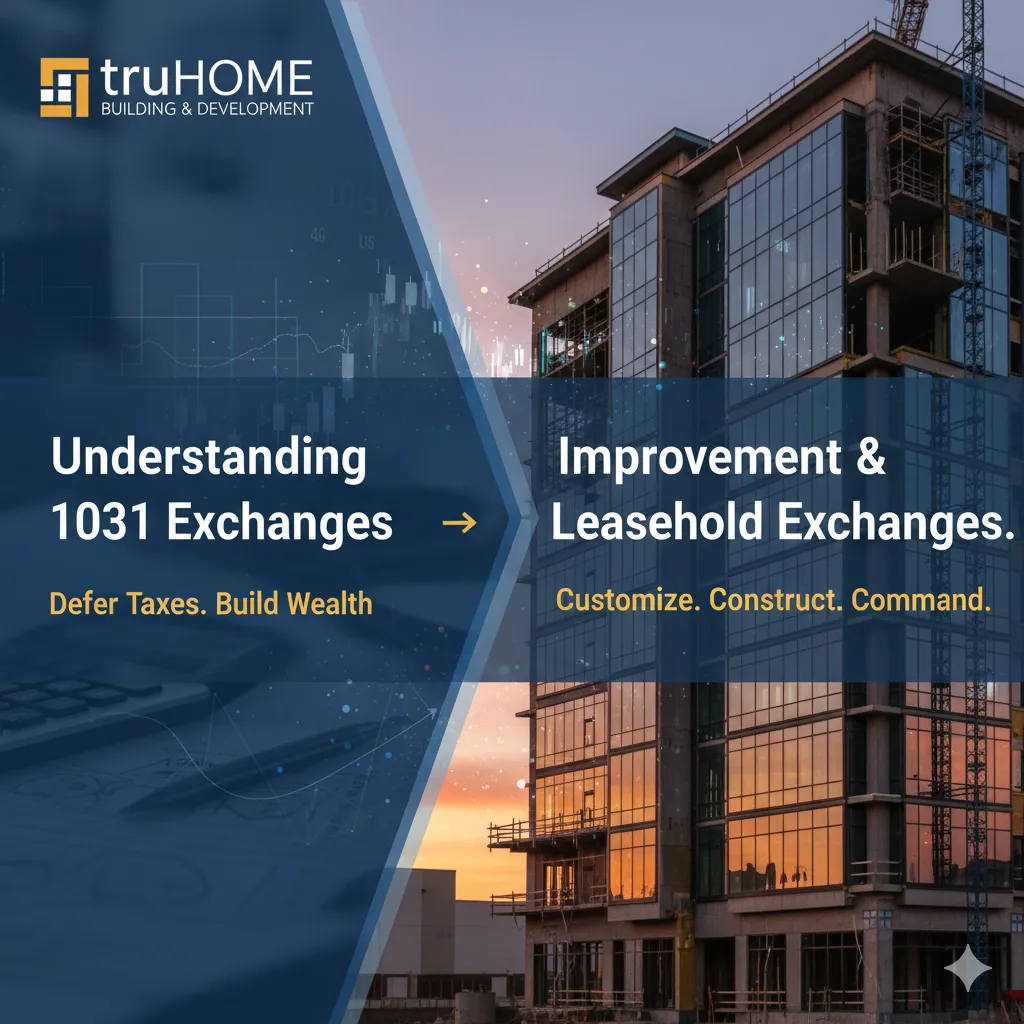
Understanding 1031 Improvement Exchanges and Leasehold Improvement Exchanges
The world of real estate investment offers various strategies for maximizing returns and deferring capital gains taxes. Among the most powerful tools available to investors are 1031 exchanges, particularly "improvement exchanges" and "leasehold improvement exchanges." While often overlooked, these specialized exchanges can unlock significant value and flexibility.
What is a 1031 Exchange
At its core, a 1031 exchange, also known as a like-kind exchange, allows an investor to defer capital gains taxes when selling an investment property and reinvesting the proceeds into another "like-kind" property. The key benefit is that you can effectively roll over your investment without immediately paying taxes on the appreciation. This deferral can last indefinitely, until the final replacement property is sold without another exchange.
1031 Improvement Exchange (Build-to-Suit or Construction Exchange)
Imagine you sell an investment property and want to acquire a new one, but the ideal replacement property doesn't exist yet, or it needs significant upgrades to meet your investment goals. This is where an improvement exchange comes into play.
In an improvement exchange, a qualified intermediary (QI) takes title to the replacement property and uses a portion of the exchange funds to construct or improve the property according to your specifications. Once the construction or improvements are complete, the QI transfers the fully improved property to you.
Key Features and Benefits:
Customization: You can effectively "build to suit" your investment needs, creating a property that perfectly aligns with your strategy.
Increased Value: The improvements made during the exchange period contribute to the value of the replacement property, ensuring you receive a property of equal or greater value to defer all capital gains.
Tax Deferral: All capital gains from the sale of the relinquished property can be deferred, provided the value requirements are met.
Timeline: The standard 1031 exchange timelines still apply: 45 days to identify potential replacement properties and 180 days to complete the acquisition of the improved property.
Considerations:
Complexity: Improvement exchanges are more complex than standard 1031 exchanges due to the construction element and the involvement of the QI in holding title during the improvement phase.
Risk: Construction projects inherently carry risks, including delays and cost overruns, which must be carefully managed within the exchange timeline.
Leasehold Improvement Exchange
A leasehold improvement exchange is a less common but equally powerful strategy. This type of exchange involves a taxpayer who holds a long-term lease (generally 30 years or more, including renewal options) on a property and has made significant improvements to it. When they sell their leasehold interest, they can then acquire a new leasehold interest with improvements, or even a fee simple property (owning the land and building outright), as a replacement property.
Key Scenarios:
Selling a long-term ground lease with significant tenant-made improvements.
Exchanging one improved leasehold interest for another.
Exchanging an improved leasehold interest for a fee simple property.
Key Features and Benefits:
Flexibility for Leasehold Investors: Provides an exit strategy for investors who have built substantial equity through improvements on leased land.
"Like-Kind" Determination: The IRS generally considers a leasehold interest of 30 years or more as "like-kind" to a fee simple interest or another long-term leasehold.
Tax Deferral: Similar to other 1031 exchanges, capital gains from the sale of the leasehold interest can be deferred.
Considerations:
Lease Term: The "30 years or more" rule for a leasehold to be considered like-kind is crucial. Shorter lease terms typically do not qualify.
Property Interest: While flexible, it's essential to ensure the relinquished and replacement properties are considered "like-kind" by the IRS.
Example: The Developer's Advantage
Imagine a developer owns an old retail plaza. They sell it for $2 million, with a significant capital gain. Instead of paying taxes, they engage in an improvement exchange. They identify a vacant lot, and their QI acquires it. The QI then oversees the construction of a brand-new, modern retail center on that lot, using the $2 million from the sale of the old plaza plus additional financing if needed. Once complete, the QI transfers the new, improved retail center, now valued at $3 million, to the developer. The developer has deferred all capital gains taxes and now owns a more valuable, income-producing asset.
Perfect for custom builds & maximizing leasehold value! Let truHOME Building and Development be your partner to unlock your real estate wealth. Visit us at: www.oregonmultiplex.com.
